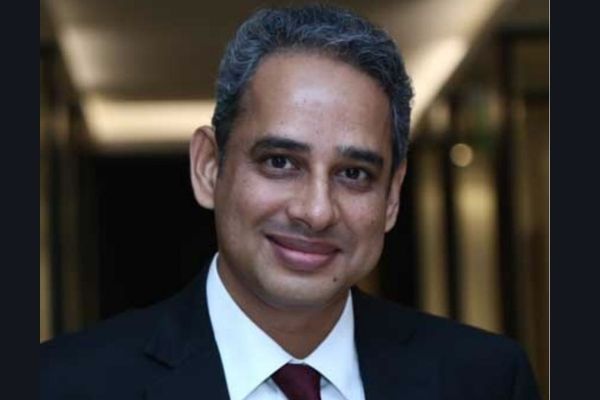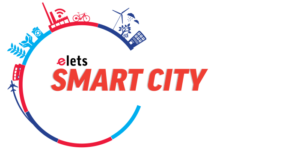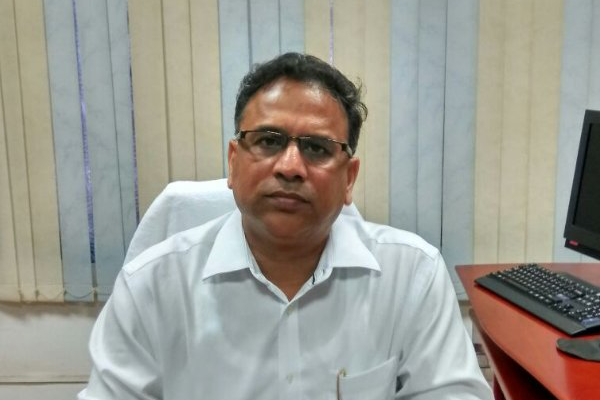
India has been undergoing a digital transformation in a rapid mode, says Saurabh Saxena, Country Director – India, Micro Focus. In this interview of Saurabh Saxena and Jyoti Bhagat of Elets News Network, he talks about the industry wise digital transition, spin-merge with HPE and cybersecurity as a challenge, among other areas.
Q: How has Micro Focus performed over the years and your plan for the future?
A: Close to 18 months back, Micro Focus was merged with Hewlett Packard Enterprises. The spin-merge aimed to create one of the largest pure play software enterprises in the industry. A lot of changes happened in the backend. In the past 18 months, we have been able to have a smooth transition to a uniform system. The beauty of this merger was the fact that there was hardly any overlapping technology or individual positions of HPE and Micro Focus. Both the pre-merged companies were serving different portfolios and solutions of the two companies were not complementary. As a consequence, we were able to go back to our customers to talk about the broader portfolios. Most of the Indian customers are in its nascent stage of the digital transformation journey and our solutions are helping them in this journey.
Q: How did you manage the overlapping service areas of HPE and Micro Focus?
A: One of the key processes of the merger was to integrate product engineering of both the organisations. So we were able to chart out clear cut roadmaps for each of the technologies. Wherever there was a complementary technology or solution, we decided how to leverage and embed them with one another to create a new and better functionality.
It was clear during the spin-merge that the name of this new entity would be Micro Focus. The reason being, Micro Focus is close to 42-year-old software organisation based out of the UK. It is one of the largest pure play software companies. The annual revenue for the fiscal year 2018 was USD 4 billion and currently, we are operating in 50 countries with over 40,000 customers. The name is known to our customers across enterprises and public sectors.
Q: What is the USP of Micro Focus?
A: One of the USPs of Micro Focus is the key to be flexible. We work flexibly with customers. We know the technologies that they are using and aim to integrate them. We have a solution called Operations Bridge – this takes events coming from the underlying technologies and consolidates those events in the Operations Bridge, collate those events and take causal events in the system. We use what already exists and pull up the events from there.
Q: How do you differentiate yourself in the market in terms of other organisations offering similar solutions?
A: Every enterprise software company will have three key components in their IT ecosystem. The first is applications, which needs to run on some infrastructure – the infrastructure ecosystem is growing increasingly complex. The second component is software, which needs to be constantly upgraded. The third component is data or information which is being generated. Micro Focus works on all these three areas.
In the area of applications, we deliver better software solutions faster without compromising on the security aspect. We work on DevOps solution. In the area of Hybrid IT, it is important to be agile enough to understand what is happening in the ecosystem and update accordingly. We leverage Machine Learning to extract data and manage the same. As a result, the data is much more accurate, actionable and automated. After thorough analysis, we draw some meaningful insights and give it to our customers. We archive and back up the information and content with the help of Information Management Solutions.
So application, infrastructure and information are the three core areas that we work with our customers. While there are players in the market specialising in one of these three areas, or other niche areas, there are very few who offer solutions in all these areas.
Q: What are the core functional areas of Micro Focus?
A: The core philosophy of Micro Focus is two-fold. First one is, how we can help customers run and transform at the same time. While doing that, we focus on innovation and minimising risks. New technologies are rising on the horizon which the customers want to adopt and we help them to do so with minimal or no risks. While doing that, we also help bridge the old and new technologies. We help our existing and core customers of Micro Focus legacy COBOL to migrate to the visual COBOL.
Q: How relevant is COBOL technology in this era of technology?
A: It is very much relevant. There are several companies of repute which run entirely on COBOL. Many of the large organisations of certain sectors have been running their applications on COBOL and legacy systems. The cost and risk of this migration is way too high. Organisations have to choose whether they want to migrate or not. One of the reasons they have to migrate is because the vendors can’t support in the existing system. Micro Focus helps these organisations in transforming their operations and those who don’t.
Q: One of the biggest threats companies, be it private or public, face today is cybersecurity. How do you plan to curb this challenge?
A: Cybersecurity is indeed a challenging area which needs to be addressed. The basic and core idea is to protect what matters most. There are three areas on which it is worked upon. Firstly, applications, which during the coding level can identify vulnerability in the system. On the infrastructure side, we have solutions around Security Information and Event Management (SIEM), which can protect your ecosystem and can correlate and give you meaningful insights. The third area is information and data, where we protect data with data encryption solution.
Q: What are the other important areas which are growing now where there is a demand to offer solutions?
A: Predictive Analytics is the need of the hour. We have Big Data Analytics on Vertica, IDOL Autonomy in the area of unstructured data management. While we have a separate business unit which works on analytics for unstructured data management customers, we also embed solutions in these areas. We look at AI Ops, Machine Learning and User Entity Behavioural Analytics in the areas of Application, Infrastructure and Information.
Q: How would you define the solution areas that you deliver to the customers?
A: We work on four-course solution areas. The first is Enterprise DevOps where we focus on speed to deliver better software faster. Second is agility of your Hybrid IT ecosystem. The third is Security Risk and governance and the fourth is predictive analytics – in terms of providing customers insights. All these transforms into four-core solution areas and we engage with the customers around these.
Q: Can you share an industry-wise break up on how much digital transformation each sector is undergoing?
A: Every sector is undergoing digital transformation. The pace and maturity of transformation vary from segment to segment. BFSI, Telecom, IT/ITeS have undergone a massive transformation over the last decade. With the current government coming up with the Digital India scheme, we saw a lot of central and state government projects taking shape across the past five years. This includes Smart Cities, surveillance projects to name a few, in which we are a part of.
Read more: Driving digital governance in 2018: A few principles
The Manufacturing sector is not alien to this change as well. Be it ERP or Supply Chain Management, the digital transformation in this sector has already begun. The complexity is also pretty high. It has its own set of challenges as well in terms of whether to invest on the infrastructure or Hybrid IT Management. We work with all of these industries. The engagement varies depending upon time and season. The pace of projects from the government and public sectors have overshadowed the other sectors because of the high scale, as the projects are different in state and central level. Telecommunication sector is undergoing a challenging ecosystem. Currently, the system has been stable and will continue to be so until 5G technology comes into place. As far as the BFSI sector is concerned, it is moving towards the next step. The required rate of change in software is very high. Hence, it is a great opportunity for us to engage. IT/ITeS is also very complex and we work broadly with them.





















